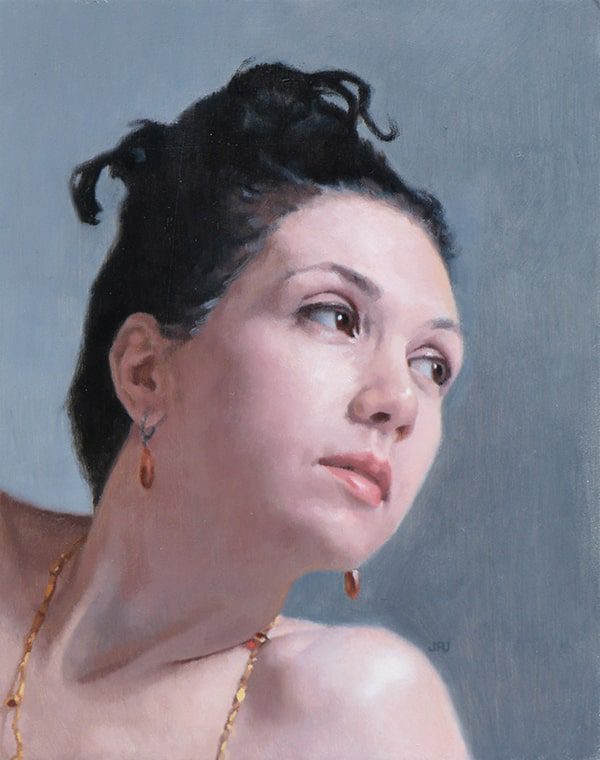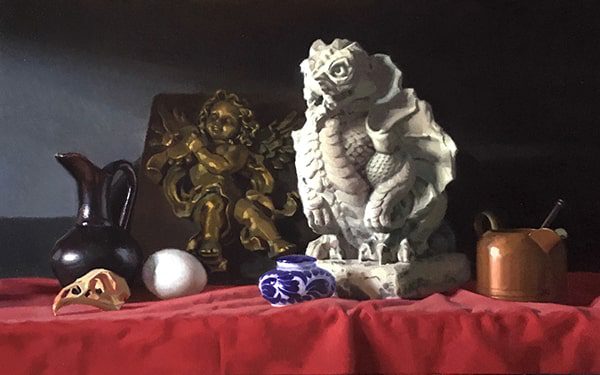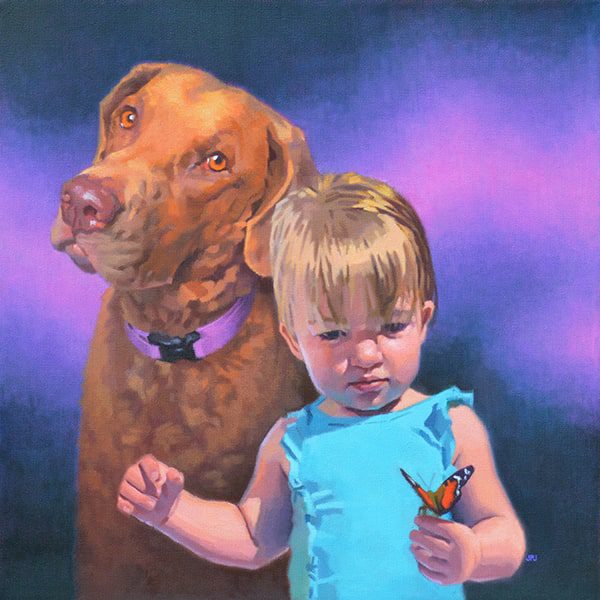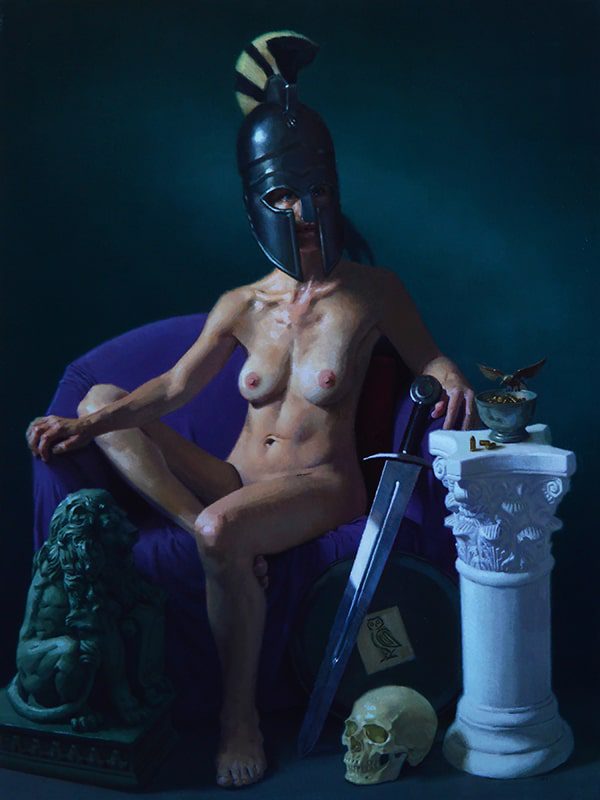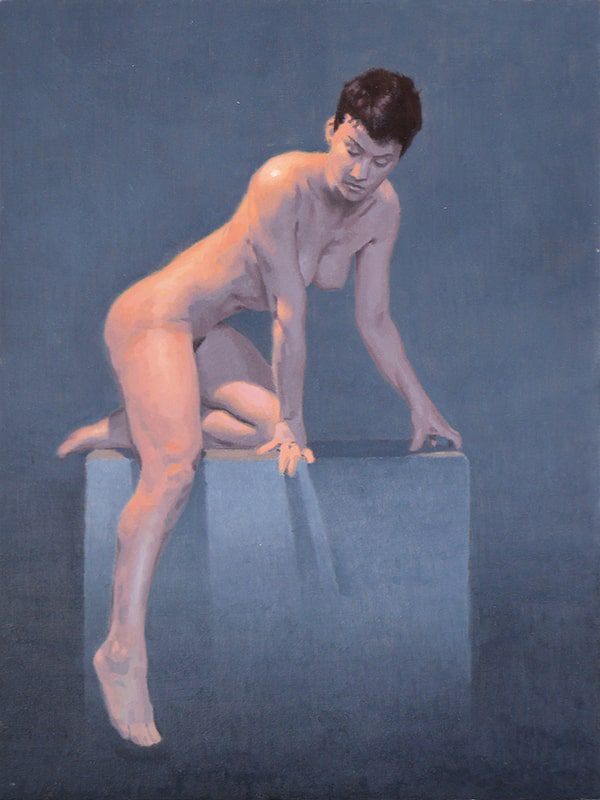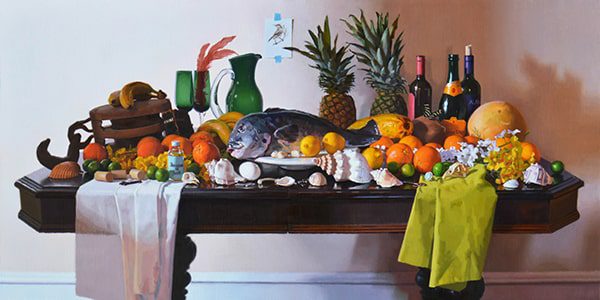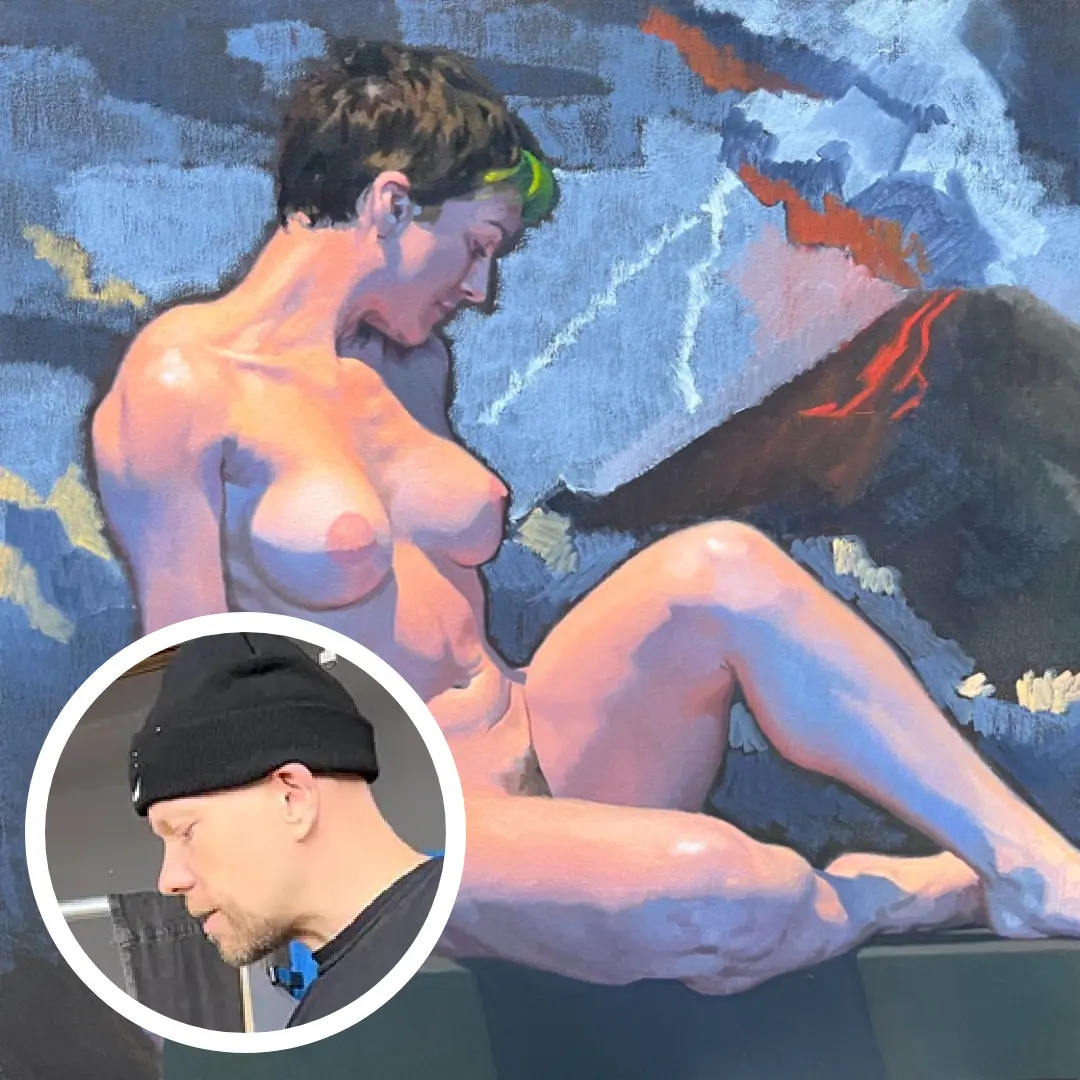
Figurative Painting in Oil:
the process, start to finish!
Learn a conceptual model of value management applicable to any subject, including the imaginary.
Instructor: Jason Jenkins
Audience: Fine Art Painters
Medium: Oil
Stage: Aspiring, Emerging
Wednesday, May 15
May 15 | May 29 | Jun 12 | Jun 26 | Jul 10 | Jul 24 | Aug 7 | Aug 21 | Sep 4 | Sep 18
Bi-weekly for 10 weeks
5pm – 7pm MT
$353.00
Note: Price in $USD
39 in stock
All recordings are available for 1-month after the course finishes.
![]() High School, University, and College students get 30% off!
High School, University, and College students get 30% off!
See FAQs at the bottom of this page for details.
Course Description
The demonstration will begin on a canvas that has previously been treated with an imprimatura, or oil stain, of raw umber, which has been allowed to dry. We will begin drawing the image directly in paint on the canvas, exploring scale, placement, and proportion, while utilizing abstract linear geometry to develop the design.
We will then shift into mass painting, thinly and transparently blocking in shadow shapes in contrast to open spaces maintained to represent the light. Having spent some time adjusting and refining these light and dark shapes in pursuit of a reasonably accurate arrangement of interlocking graphic shapes, we will then block in the light mass with one value representing the lower or darker end of the light spectrum.
The light mass will be blocked in as an addition effort to refine and adjust rather than passively filling in predetermined spaces. Progressively building up paint density simultaneously to expanding the value range, additional shapes will be added, each at a higher value than its predecessor, to breakdown the light mass in a planar fashion relative to the direction of the light source.
This will be done in monochrome to enable greater focus on the development of the drawing. Development of its relative relationship in a mosaic-like manner that maintains the already developed planar structure. This will serve as a foundation for turning form in a more organic manner in the following stage.
Initial color notes, referred to as dead coloring, will be compromised by the monochrome layer beneath them and at best will represent a ball-park estimate providing a beginning context for the gradual development of the chromatic relationship across the whole.
Once this stage has been completed and dried, we will embark on the final stage, introducing a mixed medium of stand oil and solvent, and switching to softer brushes. In this stage, we will render form by building smaller and smaller planes between the larger ones already determined, utilizing their relationships and averages to control the range and key, managing edges, and further developing the relationship of transparent and opaque paint application.
We will work section by section in this manner until the painting is completed. As we approach the conclusion of the demonstration subjects such as varnishing and framing will be addressed. This demonstration is meant to be within the context of a casual and open forum discussion, and audience members are invited to participate in the dialogue by bringing their questions and thoughts to the artist’s attention.
What You'll Learn
- Learn how to use abstract geometry in direct gesture based painting as efficient means of setting up the design of a painting.
- Learn a conceptual model of value management applicable to any subject, including the imaginary.
- Develop a deeper understanding of color relationships, range and key, and the management of an extended high chroma palette.
- Learn the principle of fat over lean, and its relationship to opaque and transparent paint application.
- Discover a systematic and procedural method of painting, built on logic and strategy, which you can continue to practice independently.
Supply List
Note Taking Materials
Instructor Bio
As a teacher and a lifelong student, the investment of time spent in academia has been a most valuable and a most fortunate opportunity. It has fueled my passion in the studio and in the classroom, where I consider it a duty and a privilege to pass on technique and methodology to those who hunger for them. I take that role very seriously.
From this position in my career and in my life, I look back through time, all the way back to the fog of my earliest memories. Scattered along the way I see the debris of many abandoned ideas, personal experiences, and formative memories. I see the debris collectively as the crumbs of a personal mythology in the earliest stages of incubation, and I see my long-term fixation on the narrative and the figure as the natural extensions of a time-honored vehicle within which to explore it.
I look forward and I see my recent work as in the larval stage, actively evolving into a new iteration that aims to explore contemporary drama and visual effect, and to utilize therapy, experience, and maturity to explore personal mythological narratives, in a manner that addresses the frequently veiled Intersectionality of mental health, abuse, sexuality, gender, and addiction, in a familiar and relatable context.
COURSE FAQ
How many registrations are required for a course to start?
A minimum of 6 registrations are required. If 6 registrations are not received by the time the course is 24 hours from starting, the course will be cancelled and all registrants will receive complete refunds.
What is the maximum number of people in a course?
This varies for each course. The maximum number of registrations is decided by the instructor.
Can I get a refund?
Up until 72 hours before a course’s first session you can receive a complete refund. You can cancel your registration via the My Account portal, or by contacting [email protected].
After this time no refunds will be given (if you have extenuating circumstances you believe justify a refund, contact us at [email protected]).
Can I register for a course already in progress?
No. Once a course has started, no new registrations are accepted.
Where will my course be held?
All courses meet online over Zoom. You will need a device equipped with a camera and a microphone to fully participate.
If you have not used Zoom before, learn about how to use it here.
If you don’t regularly use Zoom, we recommend you join your first session 10-15 minutes early in case your computer needs to install or update Zoom.
How do I join my course?
You will receive a welcome email from [email protected] when you register. This email includes the Zoom link to join your course session. You will also receive 24 hour and 2 hour reminder emails before each session, and each of these emails includes the Zoom link. You can also access the Zoom link to join your course in your MastriusChat group.
Are the sessions recorded?
Yes, every session is recorded and are typically available 24 hours after a session ends. All session recordings will remain available for the duration of the course, and for one month following the last session. The recordings are viewable within the MastriusChat platform, and cannot be downloaded.
What if I miss a session?
You’ll be able to watch the session’s recording. If you have questions the recording doesn’t address, you can ask them in the chat feed of your course’s private MastriusChat group.
What is MastriusChat?
MastriusChat is an online discussion platform. You and your fellow course registrants will be assigned to a private MastriusChat group where you can connect and support eachother via the chat “feed”. Your group is also where you’ll access the session recordings. Other resources in your MastriusChat group include a link to join your course sessions, and a library your instructor can use to share resources.
What is a Navigator?
A Navigator is an artist who joins your course to ensure both instructor and registrants have an enjoyable experience. They support (as required) with technology, timekeeping, moderating questions, and between-session discussions on MastriusChat. The Navigator has also joined the course as participant, and just like you, they’re wanting to grow their skills and learn the material.
I’m not ready to register because I still have questions. Who do I contact?
We’d be happy to help!
Reach out to us at [email protected] and we’ll do our best to support you.
Get the STUDENT DISCOUNT
High School, University, and College students get 30% off ANY course (non-member price).
To claim this discount:
- Use coupon code in checkout: student_30_off
- Complete your checkout
- 🚩Before your course starts, Mastrius Registrations will contact you and WILL REQUIRE info to verify your student status

